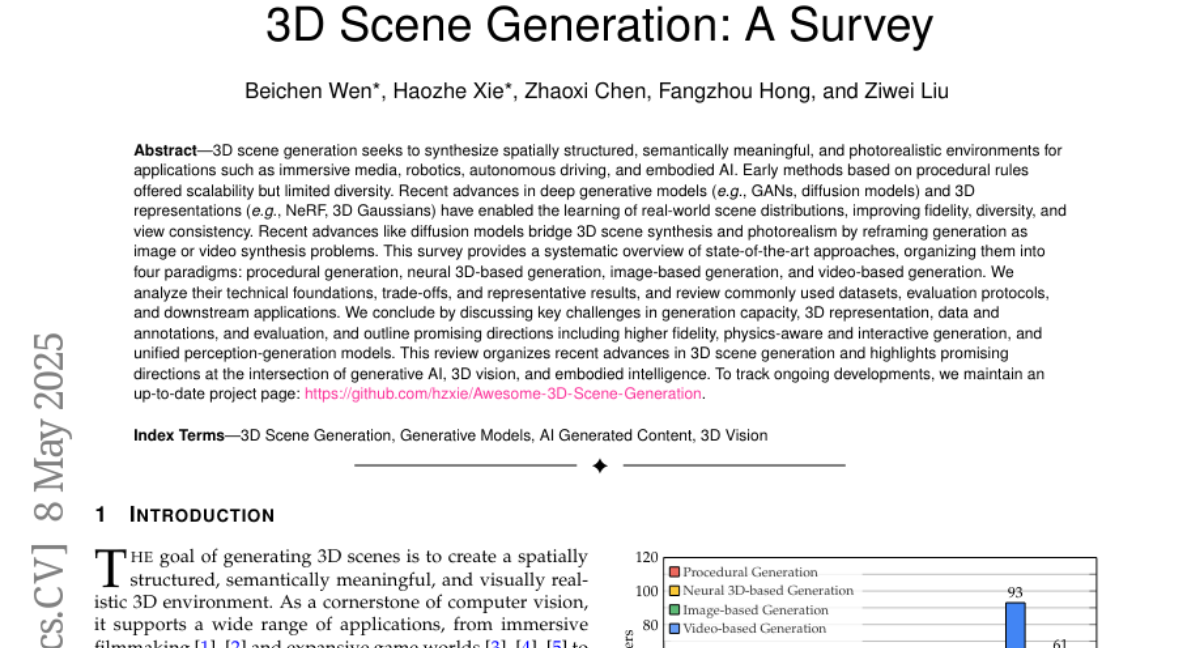3D Scene Generation: A Survey
Beichen Wen, Haozhe Xie, Zhaoxi Chen, Fangzhou Hong, Ziwei Liu
2025-05-09

Summary
This paper talks about the latest ways computers can create 3D scenes, like the kind you see in video games or virtual reality, and explains the main approaches that researchers are using today.
What's the problem?
The problem is that making realistic and detailed 3D scenes with computers is really complicated. There are many different techniques, but each one has its own challenges, such as being too slow, needing lots of data, or not looking realistic enough.
What's the solution?
The researchers reviewed and organized all the main methods for 3D scene generation into categories, such as procedural methods, neural network-based methods, and those that use images or videos as a starting point. They also pointed out the current problems with each approach and suggested ideas for what needs to be improved in the future.
Why it matters?
This matters because better 3D scene generation can make video games, movies, and virtual reality experiences more realistic and fun. It also helps scientists, architects, and designers create and explore new worlds and ideas more easily using computers.
Abstract
This survey examines the state-of-the-art methods in 3D scene generation, categorizing them into procedural, neural 3D, image-based, and video-based paradigms, and discusses current challenges and future directions.